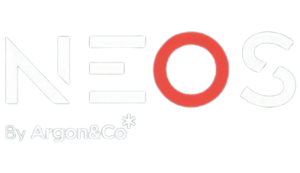Transportation and Logistics
Filter By
Browse By
- SAP Analytics and AI
- SAP Application Development and Integration
- All SAP Application Development and Integration
- SAP ABAP
- SAP ABAP Development Tools
- SAP ABAP Test Cockpit
- SAP API Management
- SAP BAPI
- SAP Basis
- SAP BRF
- SAP Business Application Studio
- SAP CMS
- SAP Design Studio
- SAP Development Tools
- SAP DevOps
- SAP EAI
- SAP EDI
- SAP Extension Suite
- SAP Fiori
- SAP Fiori Elements
- SAP Integration Suite
- SAP Low Code Application Development
- SAP Low Code Automation
- SAP Netweaver
- SAP Release Management
- SAP UI5
- SAP Web Application Server
- SAP Web IDE
- SAP Business Process Management
- SAP Center of Excellence
- SAP CIO
- SAP Customer Experience
- SAP Data and Data Management
- All SAP Data and Data Management
- SAP BW
- SAP BW/4HANA
- SAP Crystal Reporting
- SAP Data Archiving
- SAP Data Center
- SAP Data Governance
- SAP Data Integration
- SAP Data Migration
- SAP Data Quality
- SAP Data Services
- SAP Data Strategy
- SAP Data Visualization
- SAP Data Warehouse Cloud
- SAP DMS
- SAP Document Control
- SAP EIM
- SAP ETL
- SAP ETL Tools
- SAP HANA
- SAP HANA Administration
- SAP HANA Deployment Infrastructure
- SAP HANA Studio
- SAP Master Data
- SAP Master Data Governance
- SAP MDM
- SAP Enterprise Architect
- SAP Enterprise Asset Management
- SAP ERP
- SAP Finance
- All SAP Finance
- SAP Accounting
- SAP AR AP
- SAP Asset Accounting
- SAP Billing Systems
- SAP BPC
- SAP BRIM
- SAP Cash Management
- SAP Central Finance
- SAP Controlling
- SAP COPA
- SAP Cost Center Accounting
- SAP e-invoicing
- SAP FICO
- SAP Finance Automation
- SAP Financial Closing Cockpit
- SAP Financial Consolidation
- SAP Financial Planning
- SAP FX Risk
- SAP General Ledger
- SAP Global Tax Management
- SAP Hyperion
- SAP Order to Cash
- SAP Payment Processing
- SAP Profitability Analysis
- SAP Rebate Management
- SAP S/4HANA Finance
- SAP Universal Journal
- SAP Governance Risk and Compliance
- SAP Human Capital Management
- SAP Intelligent Technologies
- SAP Platform and Technology
- All SAP Platform and Technology
- SAP Business Technology Platform
- SAP Cloud Connector
- SAP Cloud Integration Platform
- SAP Cloud Migration
- SAP Cloud Platform
- SAP Cloud Providers
- SAP Cloud Strategy
- SAP Container Platform
- SAP Digital Asset Management
- SAP Digital Integration Hub
- SAP Digital Signature
- SAP HANA Enterprise Cloud
- SAP HEC
- SAP Hyperscalers
- SAP Infrastructure
- SAP Messaging
- SAP Smart Forms
- SAP Quality and Testing
- SAP Security
- SAP Spend Management
- SAP Supply Chain Management
- All SAP Supply Chain Management
- SAP APO
- SAP Asset Management
- SAP Business Network
- SAP Digital Manufacturing Cloud
- SAP Digital Twin
- SAP EWM
- SAP IBP
- SAP Inventory Management
- SAP Label Printing
- SAP Logistics
- SAP Manufacturing
- SAP Manufacturing Automation
- SAP MES
- SAP MII
- SAP MM
- SAP MRO
- SAP MRP
- SAP Order Management
- SAP Plant Maintenance
- SAP PLM
- SAP Production Planning
- SAP S&OP
- SAP SD
- SAP SPM
- SAP Supply Chain Planning
- SAP Track and Trace
- SAP Transportation Management
- SAP System Administration
Transportation and logistics are supply chain sub-functions that cater to movement of people and goods. Since supply chains exist to fulfill demand by getting the products to the customers, and transportation and logistics takes care of the actual movement, they form the backbone of most supply chains. As recent disruptions in supply chains across industries have shown, transportation and logistics are prone to process failures and risks. Effective management and transformation of transportation and logistics is therefore a priority for companies across industries.
SAP and Partner Technologies for Transportation and Logistics
Transportation and logistics are supply chain sub-functions that cater to movement of people and goods. Since supply chains exist to fulfill demand by getting the products to the customers, and transportation and logistics takes care of the actual movement, they form the backbone of most supply chains. As recent disruptions in supply chains across industries have shown, transportation and logistics are prone to process failures and risks. Effective management and transformation of transportation and logistics is therefore a priority for companies across industries.
SAP and Partner Technologies for Transportation and Logistics
Technology is rapidly transforming transportation and logistics. From building supply chain visibility through track and trace technologies to using emerging technologies like IoT, transportation and logistics function is getting redefined across industries. Examples of areas where technology is transforming transportation are:
Visibility solutions help track and trace transportation and logistics operations in real-time. This real-time data, when paired with technologies like IoT, can also help gain real-time insights into the condition of products that are moving through the transportation and logistics network.
Planning and management solutions help in transportation and logistics services procurement, transportation and demand planning, warehouse management planning, and warehouse operations execution. Examples of such solutions are transportation management solutions, warehouse management systems (WMS), warehouse execution systems (WMS).
Automation systems, primarily leveraged in warehouse operations, like warehouse mobile and static robots, help enhance warehouse productivity and efficiency by taking away many manual labor tasks, accelerating warehouse flow in many scenarios.
Optimization and analytics solutions help leverage transportation and logistics data to help gain new insights into efficiency opportunities in the network, redesign the network or perform simulations on warehouse processes. Examples of solutions are route optimization, transportation spend analytics, transportation network optimization, simulation etc.
21 results
-

Automatic Generation of Invoices for Transport and Surcharge per Shipping Value
Published: 30/August/2017
Reading time: 11 mins
In sales flows in supply chain execution, a sales order may require several outbound delivery documents for the volume (dimensions) of an item. These delivery documents can be delivered in different shipment documents. Learn how to split the invoice automatically for each transport document using invoice documents generated automatically from the shipment document. This process...…
Featured Experts
-

-

Diego Lombardini
Cloud, ERP, Business Intelligence, Analytics and Travel & Expense Management solutions
Partner Solutions Architect at AWS
-

Ingo Hilgefort
VP Business Analytics at Rizing
Become a Member
Unlimited access to thousands of resources for SAP-specific expertise that can only be found here.
Upcoming Events
Related Vendors
Your request has been successfully sent


